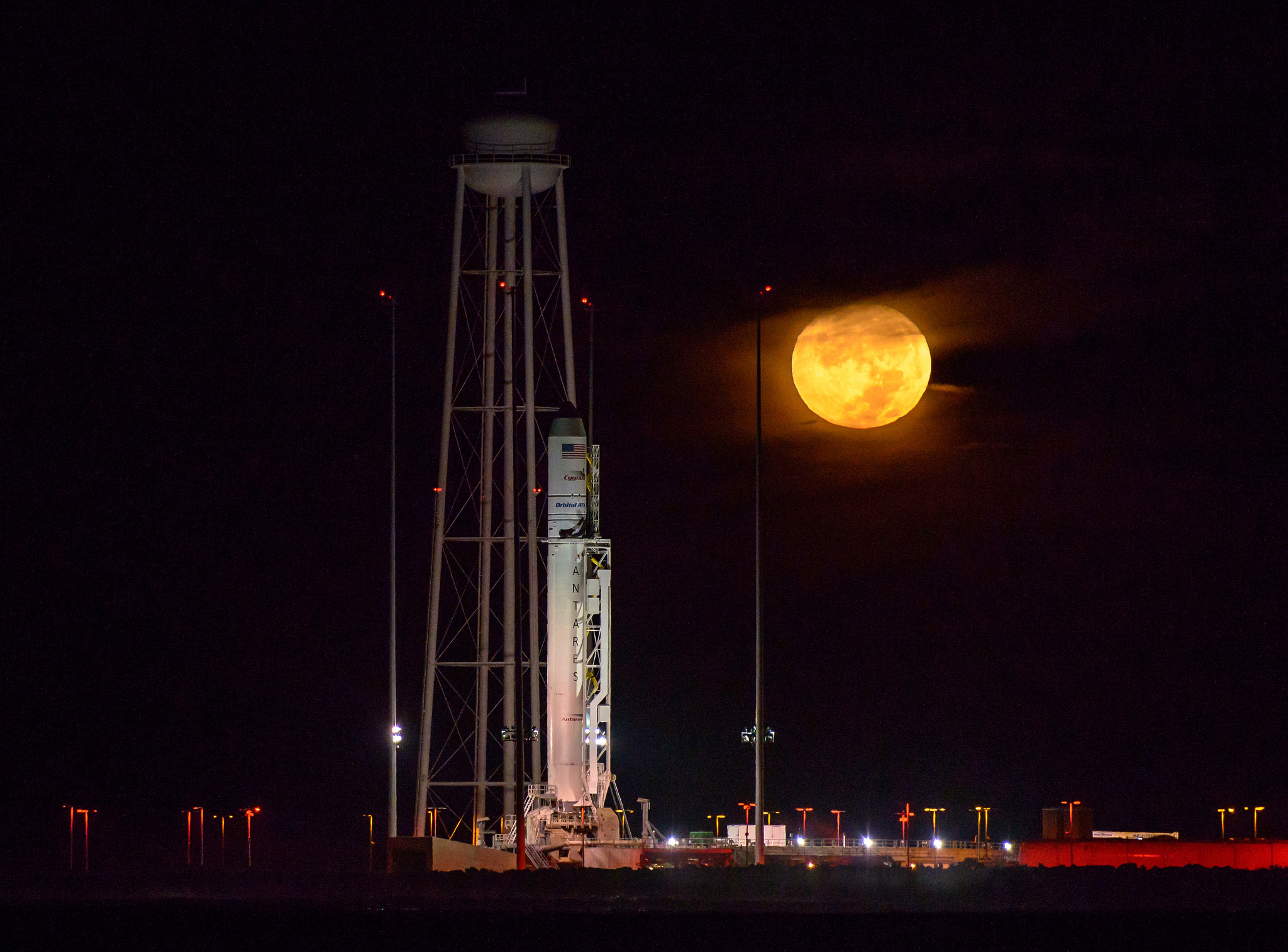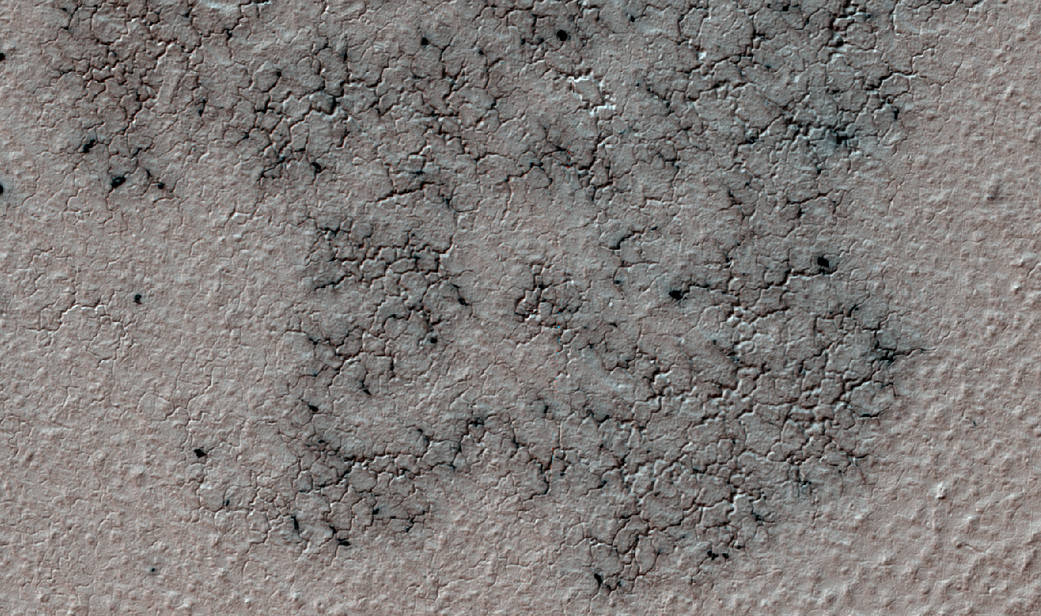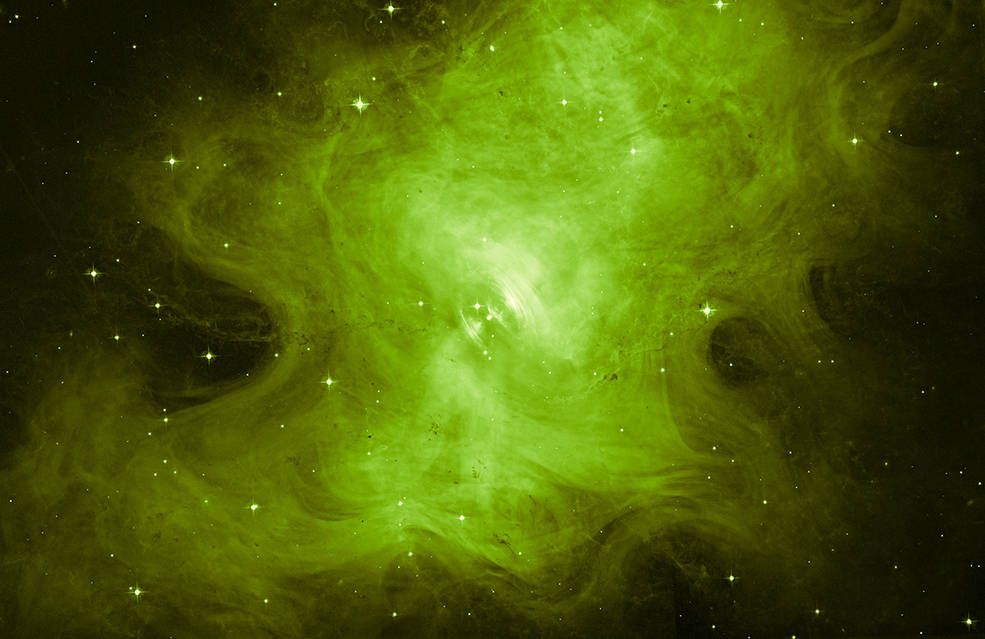Space Image of the Day Gallery (October 2016)
'Supermoon' Sets Behind Antares
Monday, October 17, 2016: A nearly-full supermoon sets behind Orbital ATK's Antares rocket in this photo of the launchpad at NASA's Wallops Flight Facility in Virginia. The photo was taken before dawn on Saturday (Oct. 15), about 24 hours before the full moon's peak. — Hanneke Weitering
Rocket Launch a Roaring Success
Tuesday, October 18, 2016: A private cargo mission to the International Space Station executed a spectacular and flawless launch Monday (Oct. 17). The Antares rocket lifted off from NASA's Wallops Flight Facility in Virginia at 7:45 p.m. EDT. In this photo, the rocket's ground support structure has just let go of the rising rocket and is falling safely off to the side. — Hanneke Weitering
Expedition 49 Makes Liftoff!
Wednesday, October 19, 2016: A Soyuz rocket carrying one American astronaut and two Russian cosmonauts to the International Space Station blasted off from the Baikonur Cosmodrome in Kazakhstan at 4:05 a.m. EDT (0805 GMT) today. The Soyuz spacecraft is expected to dock at the space station on Friday (Oct. 21). — Hanneke Weitering
Jupiter's Sunny Side
Thursday, October 20, 2016: Alex Mai, a citizen scientist, used publicly accessible data from NASA's Juno mission to Jupiter to create this image of Jupiter's sunlit side. The JunoCam team encourages people to process Juno's raw images of Jupiter and to share photos in an online community. This helps mission's scientists decide what parts of Jupiter the JunoCam will study in the future. — Hanneke Weitering
ISS Takes a Selfie
Friday, October 21, 2016: In this International Space Station selfie, NASA astronaut Kate Rubins peers out of the window of the Cupola observatory module. The Bigelow Expandable Activity Module (BEAM) can be seen in the foreground. — Hanneke Weitering
Red Spider Nebula
Monday, October 24, 2016: The Red Spider Nebula, seen here by the Hubble Space Telescope, is a two-lobed cloud of gas expanding around a dying star called a planetary nebula. Inside the Red Spider is one of the hottest stars ever observed. Its rapidly expanding gassy lobes create supersonic shock waves 62.4 billion miles (100 billion kilometers) high. — Hanneke Weitering
Strange Young Stars
Tuesday, October 25, 2016: This spectacularly spherical cluster of stars is the globular cluster NGC 362. It resides in the outskirts of the Milky Way, where stars tend to be much older than their host galaxy. Surprisingly, the stars in this cluster appear to be 2-3 billion years younger than the Milky Way. Astronomers used the Hubble Space Telescope to capture this image, which is detailed enough to reveal individual stars. — Hanneke Weitering
Breaking space news, the latest updates on rocket launches, skywatching events and more!
Martian 'Spiders'
Wednesday, October 26, 2016: These spider-like features near Mars' south pole are deep cracks and channels created by carbon dioxide. When Mars' polar ice caps thaw in the spring, carbon dioxide is released from underground. The gas carves its way out through the soil, creating these creepy crevices along the way. — Hanneke Weitering
Jupiter's Smiley Face
Thursday, October 27, 2016: Jupiter flashes a smile at the Solar System in this photo created by citizen scientist Randy Ahn. He used data from NASA's Juno spacecraft to make the image. Jupiter was only half-lit from Juno's point of view, so Ahn reflected the image to reveal Jupiter's big smile. — Hanneke Weitering
Creepy Crab Nebula
Friday, October 28, 2016: This nebula may be the gassy remains of a dead star that exploded long ago, but its heart is still beating. A neutron star, or the crushed remains of the star that once was, spins rapidly at the nebula's core while spewing bursts of energy into space. NASA's Hubble Space telescope took several exposures of the Crab nebula in 2012 to create this image. Its green glow comes from a filter used for observations. — Hanneke Weitering

Space.com is the premier source of space exploration, innovation and astronomy news, chronicling (and celebrating) humanity's ongoing expansion across the final frontier. Originally founded in 1999, Space.com is, and always has been, the passion of writers and editors who are space fans and also trained journalists. Our current news team consists of Editor-in-Chief Tariq Malik; Editor Hanneke Weitering, Senior Space Writer Mike Wall; Senior Writer Meghan Bartels; Senior Writer Chelsea Gohd, Senior Writer Tereza Pultarova and Staff Writer Alexander Cox, focusing on e-commerce. Senior Producer Steve Spaleta oversees our space videos, with Diana Whitcroft as our Social Media Editor.










